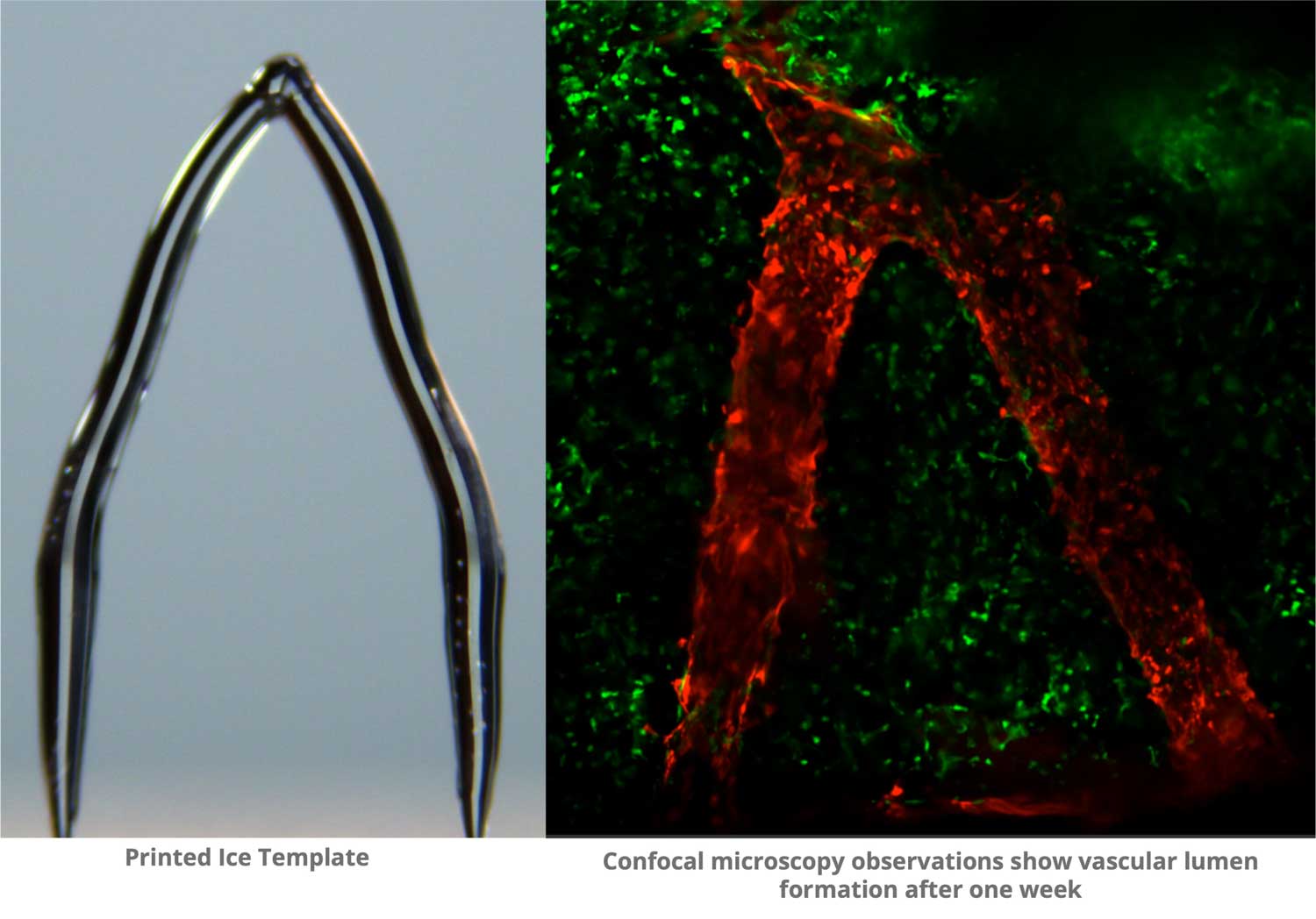New research shows that it is possible to use 3D ice printing to create structures that resemble blood vessels in the body. Feimo Yang, a PhD student in the labs of Philip LeDuc and Burak Ozdoganlar at Carnegie Mellon University, will present his research at the 68th Annual Meeting of the Biophysical Society.
The demand for organ transplants far outstrips the supply, with about 6,000 Americans dying each year while waiting for a donor organ. The 3D ice printing technique presented by Yang and his team offers an innovative approach to one of the biggest problems in tissue engineering: creating functioning blood vessel networks.
Unlike conventional 3D printing methods, which often have a layered structure, this technique enables the creation of very smooth structures without visible layers. A stream of water is directed onto an extremely cold surface, whereby the water does not freeze completely but retains a liquid phase on top. This continuous, free-form method results in realistic blood vessel channels.
“What makes our method different from other kinds of 3D printing is that instead of letting the water completely freeze while we’re printing, we let it maintain a liquid phase on top. This continuous process, which is what we call freeform, helps us to get a very smooth structure. We don’t have a layering effect typical with most 3D printing,” Yang explained.
The researchers use heavy water, whose hydrogen atoms are replaced by deuterium, to achieve a higher freezing point and therefore a smoother structure. The 3D-printed ice templates produced in this way are embedded in a gelatine material, GelMA. Under UV light, the gelatine hardens and the ice melts, leaving behind realistic blood vessel channels.
Yang and his team were able to successfully introduce endothelial cells, similar to those in blood vessels, into the engineered blood vessels, where they survived for up to two weeks. This method not only opens up new avenues for transplantation medicine, but could also be important for drug research by making it possible to test the effect of drugs on blood vessels or to test therapies on patient cells in advance.
This innovative approach could mean significant progress in the creation of complex, life-like blood vessel networks for tissue engineering and ultimately for the production of organs for transplantation.
Subscribe to our Newsletter
3DPresso is a weekly newsletter that links to the most exciting global stories from the 3D printing and additive manufacturing industry.






















